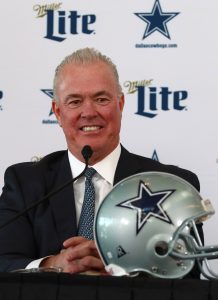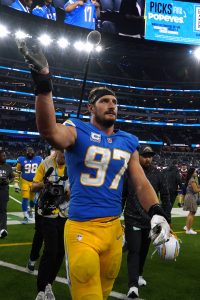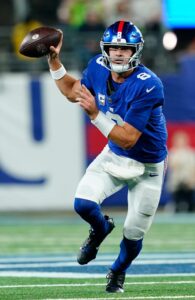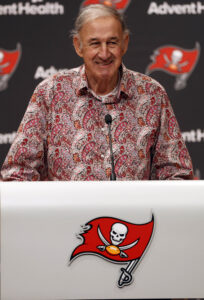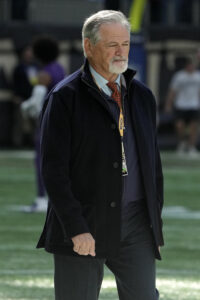The 2019 Cowboys offseason featured several extension candidates. The team ended up paying most of them, giving extensions to Ezekiel Elliott, Dak Prescott, La’el Collins and Jaylon Smith. Dallas eventually re-signed Amari Cooper, though he hit free agency before that deal was finalized. Byron Jones departed for Miami shortly before the Cooper agreement.
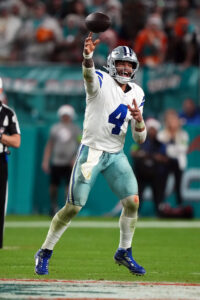 Although one of the extensions — Prescott’s — affects where the Cowboys are now, this offseason’s dilemma dwarfs where Dallas stood five years ago. Three players — Prescott, CeeDee Lamb, Micah Parsons — are either in contract years or eligible for an extension. Each member of the trio can make a case to become the highest-paid player at his position. For Lamb and Parsons, that means the highest-paid non-QB. Prescott has unique leverage to force the issue into not only becoming the NFL’s highest-paid player but creating a gap between himself and No. 2 on that list.
Although one of the extensions — Prescott’s — affects where the Cowboys are now, this offseason’s dilemma dwarfs where Dallas stood five years ago. Three players — Prescott, CeeDee Lamb, Micah Parsons — are either in contract years or eligible for an extension. Each member of the trio can make a case to become the highest-paid player at his position. For Lamb and Parsons, that means the highest-paid non-QB. Prescott has unique leverage to force the issue into not only becoming the NFL’s highest-paid player but creating a gap between himself and No. 2 on that list.
The Cowboys are not believed to want to set markets, but they may not have a choice. This qualifies as a good problem, given the talent Parsons and Lamb have displayed on their rookie deals. Prescott has not proven himself to be as good at his position compared to the younger Cowboys stars, but as an upper-echelon quarterback, he would carry significant leverage even if his contract situation veered toward a standard place.
But Dak’s circumstances are far from standard. The former Day 3 sensation bucked the trend by playing out his fourth season, for fourth-round money, and waiting on an extension. This meant a year on the franchise tag. Despite that 2020 season being cut short by an ankle injury that still impacts him today, Prescott secured a four-year, $160MM deal just before the March 2021 deadline to apply franchise tags. Prescott became the outlier Cowboy standout, signing for less than five years, and his leverage-maximization tactics led to a procedural franchise tag and a no-trade clause. Part one of that effort looms large years later.
It is hard to overstate how much leverage the Cowboys have given their ninth-year quarterback. Not only can Prescott not be tagged or traded, an offseason restructure placed a $40.13MM dead money figure in play for 2025. That penalty would hit Dallas’ 2025 cap sheet if Prescott is not re-signed before the start of the 2025 league year. The Vikings are taking this medicine after Kirk Cousins departed in March, though Minnesota’s dead cap hit from that defection is $28.5MM.
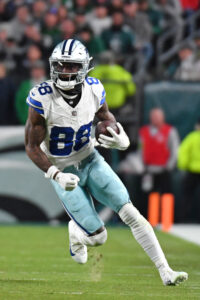 Prescott is also tied to what would be a record-setting 2024 cap number ($55.13MM) — Dak, Deshaun Watson and Daniel Jones would each set that record barring changes to their contracts — but the void years on his contract threaten a future penalty. A Zack Martin restructure would also give Dallas a $26.5MM dead cap hit if he is not re-signed before the ’25 league year. Prescott, 30, securing a deal in the $60MM-per-year ballpark should be considered in play based on the ammo he carries.
Prescott is also tied to what would be a record-setting 2024 cap number ($55.13MM) — Dak, Deshaun Watson and Daniel Jones would each set that record barring changes to their contracts — but the void years on his contract threaten a future penalty. A Zack Martin restructure would also give Dallas a $26.5MM dead cap hit if he is not re-signed before the ’25 league year. Prescott, 30, securing a deal in the $60MM-per-year ballpark should be considered in play based on the ammo he carries.
While the 49ers have seen their Brandon Aiyuk talks impacted by another receiver market boom, the Cowboys are more directly affected by what took place in Minnesota last month. The Vikings gave Justin Jefferson a $35MM-per-year deal that includes record-smashing guarantees ($110MM in total, $88.7MM at signing). The latter figure hovers a staggering $36MM north of the next-closest wideout. Aiyuk has been tied to wanting a guarantee north of $80MM; Lamb — a two-time Pro Bowler and 2023 first-team All-Pro — has proven more and can make a stronger case for Jefferson-level terms.
As they prepare to make a strong Prescott offer, the Cowboys may well have their QB in place as a higher priority compared to their top pass catcher. Lamb can be tagged in 2025, and while the team has used its franchise tag in six of the past seven years, a cap hold near $25MM would be an issue. Though, the Cowboys — albeit without Prescott, Martin and Lamb signed for 2025 — are projected to hold more than $64MM in cap space next year. They would have an easier time tagging Lamb than the 49ers would cuffing Aiyuk. For 2024, a Lamb holdout looms. Martin succeeded down this path last year, but Lamb’s matter is different due to the WR seeking a monster extension instead of more security on an existing contract.
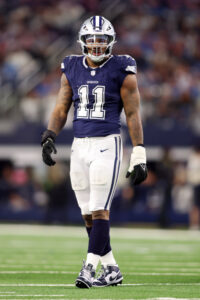 Expecting to become the NFL’s highest-paid non-QB, Parsons has said waiting until 2025 for his payday would be acceptable. Another cap jump and another dominant season would put him on track to command close to $40MM per year, though the Cowboys do not expect next year’s cap spike to match this year’s $30.6MM jump. If the Cowboys do finalize extensions for Prescott and Lamb this year, will three top-market contracts be a workable scenario?
Expecting to become the NFL’s highest-paid non-QB, Parsons has said waiting until 2025 for his payday would be acceptable. Another cap jump and another dominant season would put him on track to command close to $40MM per year, though the Cowboys do not expect next year’s cap spike to match this year’s $30.6MM jump. If the Cowboys do finalize extensions for Prescott and Lamb this year, will three top-market contracts be a workable scenario?
Of the three, Parsons is probably the best overall player. The three-time All-Pro is tied to a 2025 fifth-year option and could be tagged in 2026, separating this matter from the near-future Prescott and Lamb deadlines. But the Cowboys will certainly need to factor in a Parsons payday as they navigate talks for their QB-WR combo.
The team would have saved money by extending Prescott or Lamb last year, but the team checked off other boxes — re-ups for Trevon Diggs and Terence Steele — as these expensive matters lingered. Time is running out for Jerry Jones and Co. to begin enacting solutions before training camp.
How will the team end up resolving this quandary? As costs rise, will trade rumors emerge surrounding one of the standouts? Weigh in with your thoughts on the Cowboys’ situation in PFR’s latest Community Tailgate.

